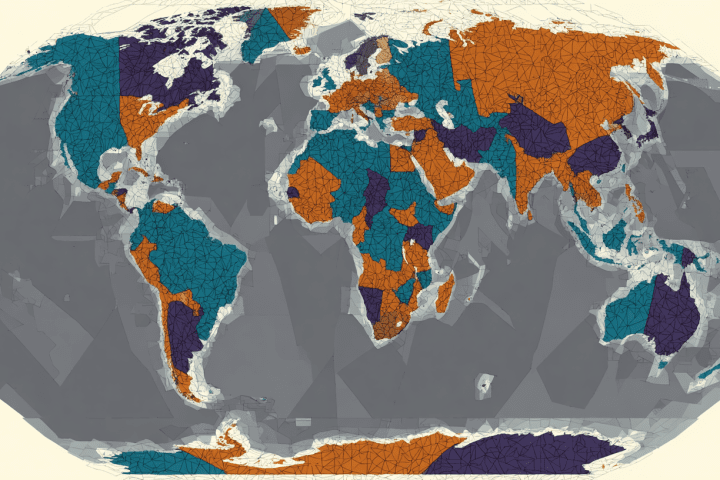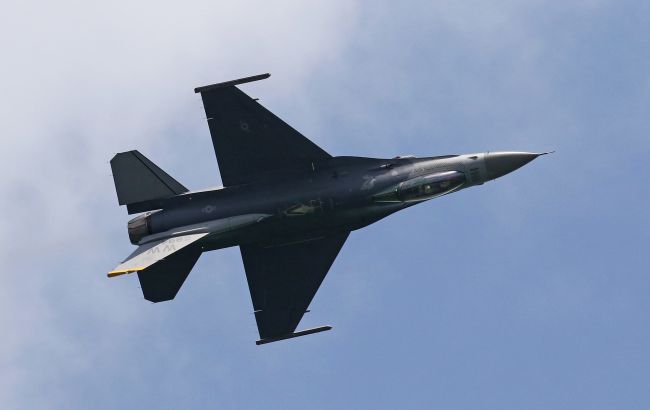The global order is undergoing its most significant transformation since the end of the Cold War. As we navigate through 2025 toward 2030, understanding the geopolitical trends reshaping our world becomes essential for businesses, policymakers, and informed citizens. From the reconfiguration of power dynamics to technological competition and climate-driven conflicts, the next five years will fundamentally alter the international landscape in ways that demand our attention and strategic foresight.
The Multipolar Power Shift
The era of uncontested American hegemony is giving way to a genuinely multipolar world where influence is distributed among multiple power centers. This transition creates both instability and opportunity as nations adjust to new realities and seek advantageous positions within emerging structures.
China’s global ambitions continue to reshape geopolitical calculations across every continent. Beijing’s Belt and Road Initiative, despite facing implementation challenges and debt concerns, has created dependencies and influence networks spanning Asia, Africa, and Europe. The technological decoupling between China and the West accelerates, forcing nations to choose between competing digital ecosystems and supply chain architectures.
The United States, while still the world’s preeminent military and economic power, faces constraints on its ability to unilaterally shape global events. Domestic political polarization, fiscal pressures, and alliance management challenges require more selective engagement and burden-sharing with partners. The Indo-Pacific remains Washington’s strategic priority, with implications for resource allocation and attention to other regions.
Emerging Middle Powers
India’s rise as a critical swing power will define much of the 2025-2030 period. With the world’s largest population, fastest-growing major economy, and expanding military capabilities, New Delhi increasingly sets its own course while maintaining strategic autonomy. India’s relationships with the United States, Russia, and China will significantly impact Asian security architecture and global trade patterns.
Regional powers are asserting greater independence and influence within their spheres. Turkey, Saudi Arabia, Brazil, and Indonesia are pursuing foreign policies less aligned with traditional bloc structures, creating fluid coalitions based on specific interests rather than permanent alignments. This trend toward strategic autonomy complicates traditional alliance management but also creates opportunities for creative diplomacy.
Technology as the New Battlefield
Geopolitical competition increasingly centers on technological supremacy rather than traditional military capabilities. The race for dominance in artificial intelligence, quantum computing, biotechnology, and advanced manufacturing will determine economic prosperity and national security for decades to come.
The AI Arms Race
Artificial intelligence development has become a national security imperative for major powers. The competition extends beyond creating advanced AI systems to controlling the data, computational infrastructure, and talent pipelines that enable AI leadership. Nations are implementing restrictions on technology transfers, screening foreign investments in critical sectors, and recruiting global AI talent through immigration incentives and research funding.
The implications extend to military applications where AI-enabled autonomous weapons, intelligence analysis, and cyber capabilities are transforming warfare. International efforts to establish norms governing AI in military contexts face significant obstacles as nations prioritize competitive advantage over cooperative restraint.
Semiconductor Supremacy
Control over semiconductor manufacturing and supply chains has emerged as a critical strategic asset. The concentration of advanced chip production in Taiwan creates vulnerabilities that both China and the United States seek to address through massive investments in domestic capabilities. This technological competition influences trade policies, investment flows, and even military calculations regarding Taiwan’s future.
Europe, recognizing its semiconductor dependencies, is pursuing ambitious plans to capture significant market share through subsidies and regulatory advantages. Japan and South Korea leverage their technological expertise to maintain relevance in this crucial sector. The result is a fundamental restructuring of global technology supply chains along geopolitical lines.
Climate Change as Geopolitical Accelerant
Environmental factors are no longer peripheral to geopolitical analysis—they’re central drivers of conflict, migration, and international cooperation. The 2025-2030 period will test whether nations can coordinate responses to shared threats or whether climate change exacerbates existing tensions.
Resource scarcity driven by climate change is creating new flashpoints. Water stress in the Middle East, South Asia, and parts of Africa intensifies both internal conflicts and cross-border tensions. Agricultural disruption forces population movements that strain political systems and fuel nationalist reactions in destination countries. The intersection of climate impacts with existing ethnic, religious, and political divisions creates compounding instability risks.
The Arctic emerges as a new geopolitical frontier as melting ice opens shipping routes and resource access. Russia, the United States, Canada, and Nordic nations are expanding military presence and asserting territorial claims. This region could become either a model for international cooperation or another arena for great power competition, with significant implications for global stability.
Green Transition Geopolitics
The global shift toward renewable energy is redistributing economic and political power. Countries controlling critical minerals—lithium, cobalt, rare earth elements—gain strategic leverage previously enjoyed by oil producers. China’s dominance in processing these materials and manufacturing renewable energy equipment provides significant geopolitical advantages that Western nations are scrambling to counter.
Traditional energy exporters face existential challenges as demand projections for fossil fuels decline. The economic and political stability of Gulf states, Russia, and other petrostates depends on successfully navigating this energy transition. Their responses—ranging from economic diversification to attempts to slow the transition—will significantly impact global energy markets and geopolitical alignments.
Critical Regional Dynamics
Indo-Pacific: The Primary Theater
The Indo-Pacific remains the world’s most strategically consequential region, where economic dynamism intersects with military tensions and historical grievances. Several factors will define this region’s trajectory:
- Taiwan’s uncertain future: Cross-strait tensions remain the most dangerous potential trigger for great power conflict, with military capabilities, political developments, and miscalculation risks all trending concerning directions.
- ASEAN’s balancing act: Southeast Asian nations continue navigating between Chinese economic influence and security partnerships with external powers, with varied success and significant implications for regional order.
- Maritime disputes persistence: Competing territorial claims in the South China Sea and East China Sea generate ongoing friction with global trade implications given the volume of commerce transiting these waters.
- Korean Peninsula evolution: North Korea’s nuclear program and potential scenarios for Korean unification or conflict continue influencing regional security calculations and alliance structures.
- Australia-China tensions: The deteriorating relationship between Canberra and Beijing reflects broader democratic-authoritarian tensions while affecting regional trade and security arrangements.
Middle East Reconfiguration
The Middle East is experiencing generational changes in alliance patterns and strategic priorities. The Abraham Accords have fundamentally altered Israeli-Arab relations, creating new cooperation frameworks focused on countering Iranian influence and pursuing economic modernization. However, the Palestinian issue remains unresolved, periodically erupting into violence that threatens broader regional stability.
Iran’s regional ambitions and nuclear program continue driving security concerns and proxy conflicts across Yemen, Syria, Lebanon, and Iraq. The balance between containment and engagement with Tehran will significantly impact regional stability throughout the 2025-2030 period.
Saudi Arabia and the UAE are pursuing ambitious economic diversification programs that could transform the region’s role in the global economy. Success or failure of these visions will determine whether the Gulf transitions beyond oil dependency or faces economic crises as energy transitions accelerate globally.
Europe’s Strategic Awakening
Russia’s actions have catalyzed a European strategic awakening, with historically pacifist nations significantly increasing defense spending and reassessing security dependencies. The question of European strategic autonomy—particularly regarding defense capabilities and energy security—will shape transatlantic relations and European influence globally.
The European Union faces internal challenges balancing enlargement ambitions with institutional coherence, managing migration pressures, and maintaining economic competitiveness against American and Chinese rivals. How Europe navigates these challenges will determine its ability to act as a unified geopolitical force rather than a collection of individual nations.
Economic Fragmentation and Geoeconomics
The integrated global economy is fragmenting along geopolitical lines, though not completely deglobalizing. “Friend-shoring” and “de-risking” strategies are replacing pure efficiency optimization in supply chain design. This creates distinct economic spheres with different rules, standards, and dominant players.
Trade blocs are forming along explicitly geopolitical lines rather than purely economic logic. The Indo-Pacific Economic Framework, various free trade agreements, and investment screening mechanisms all reflect security considerations alongside economic factors. This trend reduces global economic efficiency but increases resilience and aligns economic flows with political relationships.
Financial system fragmentation, while less advanced than trade restructuring, is gradually emerging. Alternative payment systems challenge dollar dominance at the margins, though the greenback’s supremacy will likely persist through 2030. Sanctions as a geopolitical tool face diminishing effectiveness as targeted nations develop workarounds and alternative systems.
Digital Sovereignty and Cyber Conflict
Nations are asserting digital sovereignty through data localization requirements, technology standards, and internet governance models. The vision of a single, open internet is giving way to distinct digital realms with different rules regarding privacy, content moderation, and government access to data.
Cyber warfare capabilities are now central to national defense strategies, with both state and non-state actors capable of significant disruption. Critical infrastructure, financial systems, and democratic processes all face persistent cyber threats. The lack of clear international norms governing cyber operations creates escalation risks and uncertainty about appropriate responses to attacks.
The competition over technology standards—from 5G networks to artificial intelligence governance—reflects deeper struggles over whose values and interests shape the digital future. Chinese, American, and European regulatory approaches differ significantly, forcing companies and nations to navigate competing frameworks.
Institutional Adaptation Challenges
Multilateral institutions established after World War II struggle to reflect contemporary power realities. The United Nations Security Council, International Monetary Fund, and World Bank all face legitimacy questions as their structures remain anchored in 1945 rather than 2025.
Reform efforts face significant obstacles as current beneficiaries resist changes that would dilute their influence. Meanwhile, alternative institutions are gaining prominence:
- BRICS expansion: The grouping’s addition of new members and development of parallel financial infrastructure challenges Western-dominated systems
- Regional organizations: ASEAN, African Union, and other regional bodies assume greater responsibility for security and economic governance within their spheres
- Issue-specific coalitions: Ad hoc groupings addressing specific challenges increasingly supplement or bypass traditional multilateral venues
This institutional fragmentation reflects deeper divisions about governance models, development approaches, and international order principles.
Preparing for Uncertainty
Several principles emerge for understanding the 2025-2030 geopolitical landscape:
- Complexity over simplicity: Binary frameworks miss the nuanced reality where cooperation and competition coexist across different domains and issues
- Technology’s centrality: Digital capabilities increasingly determine power and influence, requiring strategic approaches that integrate technological and traditional geopolitical thinking
- Climate’s pervasive impact: Environmental factors will increasingly drive geopolitical decisions across all domains, from migration to resource conflicts to economic transitions
- Non-state actor influence: Corporations, civil society organizations, and even individuals wield unprecedented power in shaping global outcomes alongside traditional state actors
The world of 2030 will likely feature distinct spheres of influence operating according to different norms and rules, yet remaining interconnected through trade, finance, information flows, and shared challenges like climate change that respect no borders.
Conclusion
The geopolitical trends shaping 2025-2030 represent a fundamental reordering of the international system. The multipolar power distribution, technological competition, climate imperatives, and institutional adaptation challenges create an environment of heightened uncertainty and risk. Yet within this complexity lie opportunities for creative diplomacy, innovative cooperation, and new approaches to global governance.
Success in this environment requires strategic flexibility, technological sophistication, and appreciation for interconnected challenges. Whether navigating business expansion, formulating policy, or simply understanding our changing world, recognizing these geopolitical trends is essential for informed decision-making.
The future remains unwritten. The choices nations, institutions, and individuals make in the coming years will determine whether we achieve greater cooperation on shared challenges or descend into deeper fragmentation and conflict. Understanding these trends provides the foundation for shaping a more stable and prosperous global future, even as uncertainties inevitably persist in our complex, rapidly evolving world.
















